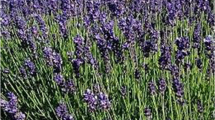Abstract
In the present study, we reviewed the literature as a systematic review to investigate the concentration of some metals (essential, none essential, and toxic metals) in herbal teas and their health risks. The search extended the literature from the database, including Google Scholar, PubMed, and Scopus, using the terms “herbal teas” combined with “heavy metals, essential metals, thyme, rosemary, chamomile, and tea” also with “iron, zinc, aluminum, chromium, cobalt, nickel, manganese, arsenic, cadmium, and lead” in titles and abstracts. The search was limited to articles published from 2012 to 2023 years. Initially, 212 articles were found; by detailed consideration, only 49 papers fit the inclusion criteria and were selected for further study. The mean of metal concentration, standard deviation, data distribution, and sample size were applied to generate data from the articles. The results indicated that all commonly consumed herbal teas included metals. None of them meet the requirements of the WHO requirements. However, more than 70% of their health risks are acceptable. The risks of arsenic and lead in tea and cadmium in black tea were considerably higher than in others. According to the review results, it is important to prevent heavy metal contamination of herbal teas by modifying cultivation patterns and also to prevent to consumption of low-quality herbal teas.

Similar content being viewed by others
Data Availability
All data that support the findings of this study are available as parts of the text, and no additional source data are required.
References
Sofowora A, Ogunbodede E, Onayade A (2013) The role and place of medicinal plants in the strategies for disease prevention. Afr J Tradit Complement Alternat Med : AJTCAM 10(5):210–229
Doğanli B (2019) Ensuring branding in rural tourism via medical aromatic herbs and an empirical study. Econ Bus Issues Retrospect Prospect 10: 355–70
Ranđelović SS, Kostić DA, Zarubica AR, Mitić SS, Mitić MN (2013) The correlation of metal content in medicinal plants and their water extracts. Hemijska Industrija 67(4):585–591
Boltman-Binkowski H (2016) A systematic review: are herbal and homeopathic remedies used during pregnancy safe? Curationis 39(1):1–8
Mousavi S, Balali-Mood M, Riahi-Zanjani B, Yousefzadeh H, Sadeghi M (2013) Concentrations of mercury, lead, chromium, cadmium, arsenic and aluminum in irrigation water wells and wastewaters used for agriculture in Mashhad, northeastern Iran. Int J Occup Environ Med 4(2):60–68
Sardari S, Mobaiend A, Ghassemifard L, Kamali K, Khavasi N (2021) Therapeutic effect of thyme (Thymus vulgaris) essential oil on patients with COVID19: a randomized clinical trial. J Adv Med Biomed Res 29(133):83–91
BozdoganSert E, Turkmen M, Cetin M (2019) Heavy metal accumulation in rosemary leaves and stems exposed to traffic-related pollution near Adana-İskenderun Highway (Hatay, Turkey). Environ Monit Assess 191(9):1–12
Koshkaki MR (2020) Herbal medicines and their effects on the psyche from the Islamic teachings perspective. Arch Pharm Pract 1:40
Nieto G (2020) A review on applications and uses of thymus in the food industry. Plants 9(8):961
Cheung S, Tai J (2007) Anti-proliferative and antioxidant properties of rosemary Rosmarinus officinalis. Oncol Rep 17(6):1525–1531
Naveed M, BiBi J, Kamboh AA, Suheryani I, Kakar I, Fazlani SA et al (2018) Pharmacological values and therapeutic properties of black tea (Camellia sinensis): a comprehensive overview. Biomed Pharmacother 100:521–531
Gupta RC, Lall R, Srivastava A (2021) Nutraceuticals: efficacy, safety and toxicity. Academic Press
Jurowski K, Krośniak M, Fołta M, Tatar B, Cole M, Piekoszewski W (2019) Safety assessment of the trace element impurities Ni and Cr in pharmaceutical herbal products for teething from polish pharmacies. Biol Trace Elem Res 191(2):517–521
Khattak MI, Khattak MI (2011) Study of heavy trace metals in some medicinal–herbal plants of Pakistan. Pak J Bot 43(4):2003–2009
Tercan HS, Ayanoglu F, Bahadirli NP (2016) Determination of heavy metal contents and some basic aspects of widely used herbal teas in Turkey. Rev Chim 67(5):1019–1022
Salahinejad M, Aflaki F (2010) Toxic and essential mineral elements content of black tea leaves and their tea infusions consumed in Iran. Biol Trace Elem Res 134(1):109–117
Gunturu KS, Nagarajan P, McPhedran P, Goodman TR, Hodsdon ME, Strout MP (2011) Ayurvedic herbal medicine and lead poisoning. J Hematol Oncol 4(1):1–6
Chambial S, Bhardwaj P, Mahdi AA, Sharma P (2017) Lead poisoning due to herbal medications. Indian J Clin Biochem 32(2):246–247
Karimi G, Hasanzadeh M, Nili A, Khashayarmanesh Z, Samiei Z, Nazari F et al (2008) Concentrations and health risk of heavy metals in tea samples marketed in Iran. Pharmacology 3:164–174
Zaynab M, Al-Yahyai R, Ameen A, Sharif Y, Ali L, Fatima M et al (2022) Health and environmental effects of heavy metals. J King Saud Univ-Sci 34(1):101653
Jaishankar M, Tseten T, Anbalagan N, Mathew BB, Beeregowda KN (2014) Toxicity, mechanism and health effects of some heavy metals. Interdiscip Toxicol 7(2):60
Yim JH, Kim KW, Kim SD (2006) Effect of hardness on acute toxicity of metal mixtures using Daphnia magna: prediction of acid mine drainage toxicity. J Hazard Mater 138(1):16–21
Muhammad S, Shah MT, Khan S (2011) Health risk assessment of heavy metals and their source apportionment in drinking water of Kohistan region, northern Pakistan. Microchem J 98(2):334–343
Obón C, Rivera D, Fonollá E, Alcaraz F, Attieh L (2021) A comparison study on traditional mixtures of herbal teas used in eastern Mediterranean area. Front Pharmacol 12:6923
García-Galdeano JM, Villalón-Mir M, Medina-Martínez J, Vázquez-Foronda LM, Zamora-Bustillos JG, Agil A et al (2020) Zn, Cu, and Fe concentrations in dehydrated herbs (thyme, rosemary, cloves, oregano, and basil) and the correlation with the microbial counts of listeria monocytogenes and other foodborne pathogens. Foods 9(11):1658
Potortì AG, Bua GD, Turco VL, Tekaya AB, Beltifa A, Mansour HB et al (2020) Major, minor and trace element concentrations in spices and aromatic herbs from Sicily (Italy) and Mahdia (Tunisia) by ICP-MS and multivariate analysis. Food Chem 313:126094
Bua DG, Annuario G, Albergamo A, Cicero N, Dugo G (2016) Heavy metals in aromatic spices by inductively coupled plasma-mass spectrometry. Food Addit Contam: Part B 9(3):210–216
Krstić M, Stupar M, Đukić-Ćosić D, Baralić K, Mračević SĐ (2021) Health risk assessment of toxic metals and toxigenic fungi in commercial herbal tea samples from Belgrade, Serbia. J Food Compos Anal 104:104159
Zazouli MA, Bandpei AM, Maleki A, Saberian M, Izanloo H (2010) Determination of cadmium and lead contents in black tea and tea liquor from Iran. Asian J Chem 22(2):1387
Maghrabi IA (2014) Determination of some mineral and heavy metals in Saudi Arabia popular herbal drugs using modern techniques. Afr J Pharm Pharmacol 8(36):893–898
Shim J, Cho T, Leem D, Cho Y, Lee C (2019) Heavy metals in spices commonly consumed in Republic of Korea. Food Addit Contam: Part B 12(1):52–58
Softić N, Makić H, Trumić E, Keran H, Ahmetović M (2021) Risk assessment of heavy metal Fe, Mn, Zn and Cu intake by consuming herbal tea thyme. Int J Res Appl Sci Biotechnol 8(2):259–261
Karimi M, Tayebi L, Sobhanardakani S (2016) Pb and Cd in medicinal plants (case study: Shirazi thyme, sweet violet, pennyroyal and jujube). J Kermanshah Univ Med Sci 20(3):6–111
Nodushan SKH, Emtiazy M, Salmani MH, Lotfi MH, Zadeh ME (2020) Monitoring of essential and toxic elements in leaves, branches, and stem of Prosopis cineraria (as anti-inflammatory) growing in Iran. Biol Trace Elem Res 198(2):714–720
Pourramezani F, AkramiMohajeri F, Salmani MH, DehghaniTafti A, Khalili SE (2019) Evaluation of heavy metal concentration in imported black tea in Iran and consumer risk assessments. Food Sci Nutr 7(12):4021–4026
Hashemi PRM, Rahimi A, Ghiasvand AR, Hosseini F (2017) A study of the pollution of ten popular medicinal plants by heavy metals in Khoramabad (Iran). Zanko J Med Sci 15:17–25
Abdi S, Shams K, Kobraee S (2017) Measurement of heavy metals, lead and cadmium, in ten major medicinal plants in Kermanshah. Appl Biol 6(24):43–50
Karimi MTL, Sobhanardakani S (2017) Levels and health risk assessment of As and Zn in Shirazi thyme, sweet violet, pennyroyal and jujube marketed in Hamedan City. J Food Hyg 6(24):43–52
Jurowski K, Krośniak M (2023) Cadmium impurities in traditional herbal medicinal products with Thymi herba available in Polish pharmacies–short communication: the level of Cd impurities and comprehensive toxicological risk assessment. Nat Prod Res 37(5):840–846
Kanrar B, Kundu S, Khan P (2022) Elemental profiling of north-east Indian tea (Camellia sinensis) by ICP-MS and assessment of associated health risk. Biol Trace Elem Res. https://doi.org/10.1007/s12011-022-03457-3
Kowalska G (2021) The safety assessment of toxic metals in commonly used herbs, spices, tea, and coffee in Poland. Int J Environ Res Public health 18(11):5779
Zuo T-T, Jin H-Y, Zhang L, Liu Y-L, Nie J, Chen B-I et al (2020) Innovative health risk assessment of heavy metals in Chinese herbal medicines based on extensive data. Pharmacol Res 159:104
Cy P, Zhu Xh, Ry H, Gf Ge, Rm H, Xc W et al (2018) Aluminum and heavy metal accumulation in tea leaves: an interplay of environmental and plant factors and an assessment of exposure risks to consumers. J Food Sci 83(4):1165–1172
Ozyigit II, Yalcin B, Turan S, Saracoglu IA, Karadeniz S, Yalcin IE et al (2018) Investigation of heavy metal level and mineral nutrient status in widely used medicinal plants’ leaves in Turkey: insights into health implications. Biol Trace Elem Res 182(2):387–406
Schunk PFT, Kalil IC, Pimentel-Schmitt EF, Lenz D, de Andrade TU, Ribeiro JS et al (2016) ICP-OES and micronucleus test to evaluate heavy metal contamination in commercially available Brazilian herbal teas. Biol Trace Elem Res 172(1):258–265
Dghaim R, Al Khatib S, Rasool H, Ali KM (2015) Determination of heavy metals concentration in traditional herbs commonly consumed in the United Arab Emirates. J Environ Public Health 2015:973878
Baye H, Hymete A (2013) Levels of heavy metals in common medicinal plants collected from environmentally different sites. Middle-East J Sci Res 13(7):938–943
Mandiwana KL, Panichev N, Panicheva S (2011) Determination of chromium (VI) in black, green and herbal teas. Food Chem 129(4):1839–1843
Naithani V, Kakkar P (2005) Evaluation of heavy metals in Indian herbal teas. Bull Environ Contam Toxicol 75(1):197–203
Author information
Authors and Affiliations
Contributions
MHS contributed to the conception and design of the study. MJR and FM performed searching articles. MHS and MG wrote the main manuscript text. All authors read and approved the final manuscript.
Corresponding author
Ethics declarations
Competing Interests
The authors declare no competing interests.
Additional information
Publisher's Note
Springer Nature remains neutral with regard to jurisdictional claims in published maps and institutional affiliations.
Rights and permissions
About this article
Cite this article
Salmani, M.H., Gholami, M., Ranjbar, M.J. et al. Comparison of Essential and Toxic Metals Levels in some Herbal Teas: a Systematic Review. Biol Trace Elem Res 202, 615–623 (2024). https://doi.org/10.1007/s12011-023-03698-w
Received:
Accepted:
Published:
Issue Date:
DOI: https://doi.org/10.1007/s12011-023-03698-w




